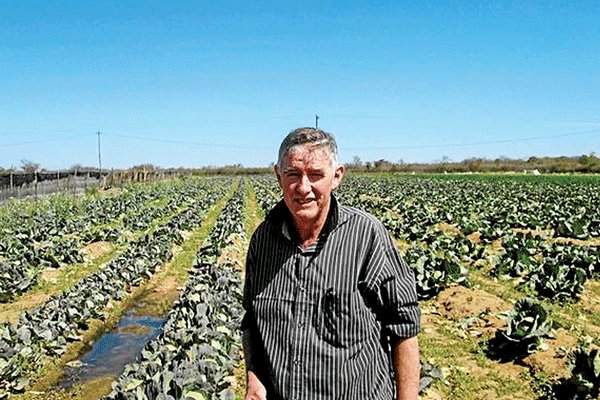By Veritas
Earlier this month the Minister of Lands, Agriculture, Water and Rural Resettlement gazetted a set of regulations ‒ the Land Commission (Gazetted Land)(Disposal in Lieu of Compensation) Regulations, 2020 (SI 62 of 2020) [link] ‒ which provided for the return of farms to two classes of farmers who had been dispossessed during the land reform and resettlement programme at the turn of this century. The farmers who are eligible to get their land back are:
· Indigenous people, as well as companies and partnerships controlled by indigenous people, and
· Citizens of countries that had concluded bilateral investment agreements with Zimbabwe, or companies or partnerships controlled by such citizens.
The regulations have given rise to some controversy, so in this Bill Watch we shall set out their legal background and try to assess their legal consequences.
The Constitution and Land
The Constitution is not as clear as it might be on the subject of agricultural land, probably because ownership and control of land is such a politically charged issue.
Commercial farmers, most of whom were white but some of whom were indigenous Zimbabweans, were forced off their farms during the chaotic “fast-track” land reform programme which started in 2000. Their farms were mostly subdivided informally and allocated to indigenous settlers who became known as A2 farmers; larger tracts of land were allocated to so-called A1 farmers. All the land seized under the programme was declared to be State land by section 16B of the former (Lancaster House) Constitution [link] and individual title deeds were cancelled in terms of section 16B(4) of that Constitution and the Deeds Registries Act [link]
This position is preserved by section 72(4) of the present Constitution, which states that all land which became State land under section 16B of the former Constitution ‒ i.e. land compulsorily acquired for resettlement:
“continues to be vested in the State, and no compensation is payable in respect of its acquisition except for improvements effected on it before its acquisition.”
Any compensation for the land, according to section 72(7) of the Constitution, is the sole responsibility of “the former colonial power” [i.e. Britain]. This is legally fatuous, of course, because our Constitution cannot possibly impose obligations on any other country.
Rather oddly, section 290 of the Constitution repeats section 72(4) word for word except that ‒ even more oddly ‒ it omits any reference to compensation. Section 295 then proceeds to contradict section 72(4) by saying that two classes of ex-farmers whose land was seized under the land reform programme are in fact entitled to compensation for both land and improvements. These privileged ex-farmers are:
· Those whose property rights were protected by international treaties or agreements (commonly called BIPPA or BIT agreements) and
· Indigenous Zimbabweans. The section does not define that term, so it should be given its ordinary meaning rather than its extended meaning under the Indigenisation and Economic Empowerment Act, which would cover people of Chinese, Indian and possibly even Portuguese descent.
Compensation for these people, according to section 295(4) of the Constitution, must be assessed and paid “in terms of an Act of Parliament”.
Contents of the Regulations
The contents of the regulations can be summarised briefly:
· Their object, according to section 3, is to provide for “the disposal of the land” to persons who are entitled to compensation under section 295 of the Constitution, i.e. indigenous ex-farmers and those protected by BIPPA or BIT agreements. Heirs of those persons, and partnerships and companies controlled by them, will also be entitled to benefit under the regulations.
· If any of the above people or organisations wish to get title to land from which they were dispossessed, they can apply to the Minister, submitting with the application:
o a copy of their title deeds;
o identity documents;
o where applicable a copy of the relevant BIPPA or BIT agreement and proof that they were protected by it;
o as well as any other documents that may be needed to decide on their applications.
· Applications will be considered by a committee of civil servants appointed by the Minister, and the committee will recommend that he grant or refuse applications taking into account the following:
· Whether the applicant qualifies to get back the title to the land [the regulations do not state this expressly, but it is implied],
· Whether the land is occupied by resettled farmers,
· Whether the State would prefer to pay compensation instead of returning the land.
· On receiving the committee’s recommendation on an application, the Minister will have to solicit the Land Commission’s views on it. He will be entitled to overrule the committee and reject an application “in the interests of defence, public safety, public order, public morality, public health, regional or town planning or the general public interest”. It seems that those are the only grounds on which he can overrule a recommendation by the committee that he grant an application.
· The Minister’s decision on an application will be final. This means that no one will be entitled to appeal against it, though it may be possible to challenge a decision in the High Court on the ground that it was reached for improper reasons or that proper procedures were not followed.
· If the Minister grants an application, he must ensure that the applicant “receives a transfer of the land in question under individual registered title” [section 8(7)].
· Where an applicant receives the transfer of his or her land, the transfer is “a final settlement of any claims that the applicant may have from the State in respect of compensation” [section 9(1)]. Although this provision is ineptly worded it apparently means that when an applicant gets his or her land back, he or she cannot claim any further compensation from the State.
The legality of the Regulations
Some commentators have suggested that there are at least four grounds on which the regulations are invalid:
1. That they are discriminatory, in that they allow only two classes of ex-farmers to get their land back while ignoring all the others. This is not a very convincing objection to the regulations, because the discrimination is envisaged by section 295 of the Constitution, which gives indigenous ex-farmers, and those protected by BIPPA or BIT agreements, a right to compensation for both land and improvements while denying that right to all the others.
2. That section 295(4) of the Constitution states that compensation payable to the two privileged classes of ex-farmers “must be assessed and paid in terms of an Act of Parliament”. The regulations, it is pointed out, are not an Act of Parliament. On the other hand, the regulations are made in terms of an Act of Parliament, namely the Land Commission Act, so compensation in terms of the regulations is indirect compensation in terms of that Act.
3. That section 295 of the Constitution guarantees compensation to dispossessed farmers, and the regulations do not provide for it. What the regulations provide for is restitution, i.e. the return of land that was taken under the land reform programme, rather than compensation for taking the land, so in a narrow sense, this objection to the regulations is correct. Looked at more broadly however, restitution is a form of compensation so farmers who take advantage of the regulations will get a form of compensation. In any event, people on whom the law confers a right [in this case the dispossessed farmers] are generally entitled to waive their right, so there is nothing wrong in principle with regulations which offer farmers restitution on condition they waive their constitutional right to compensation.
4. Finally, it has been suggested that the regulations force indigenous ex-farmers and those protected by BIPPA and BIT agreements to seek the return of their farms or forgo compensation altogether. That may be the case in reality ‒ the Government does not have the resources to pay compensation ‒ but the regulations themselves do not say that farmers who do not apply for the return of their land will lose their constitutional right to compensation.
Criticism of the Regulations
Even if the regulations are valid, they are not very satisfactory:
· They make no provision for people who may have been resettled on the land that is to be returned to the ex-farmers. If those people are to be dispossessed in order to return the land, what compensation will they get and who will pay it? Under section 292 of the Constitution, the State must give them the security of tenure, but the regulations will give them the very opposite ‒ dispossession.
· The ex-farmers who get their farms back will not enjoy much security of tenure either. Under section 72(2) of the Constitution, if the State wants any agricultural land for a public purpose, including resettlement, it can acquire the land simply by publishing a notice in the Gazette identifying the land concerned.
· Apart from the security of tenure, the regulations probably do not offer an attractive option for many of the ex-farmers. In the 20 or so years since their land was taken from them, it may have been subdivided, and buildings and equipment may have been lost or destroyed. In such cases, monetary compensation could be a better option.
· Farmers who lost two or more farms in the land reform programme will be able to get back only one farm under the regulations [see section 293(2) of the Constitution].
· Section 4 of the regulations is not clear on the extent to which ex-farmers who receive back their farms will be regarded as waiving their right to compensation ‒ we have already said the section is ineptly worded. Will the waiver extend to compensation for buildings and equipment that has been lost or destroyed? If a farmer who lost two or more farms gets only one back, will he be able to get compensation for the others?
Conclusion
The regulations are not altogether satisfactory, as we have tried to show in this bulletin. They offer a few ex-farmers a rather inadequate remedy, one which may give rise to further discontent and disputes if resettled farmers have to be evicted in order to restore the land to their original owners.
Some of the problems arising from the regulations might have been rectified if the Minister had laid a Bill before Parliament providing for compensation or restitution for ex-farmers. Debate on the Bill, even if rancorous, might have clarified the issues, exposed the problems and suggested solutions; it might, in the end, have produced a more satisfactory solution to Zimbabwe’s land question.






